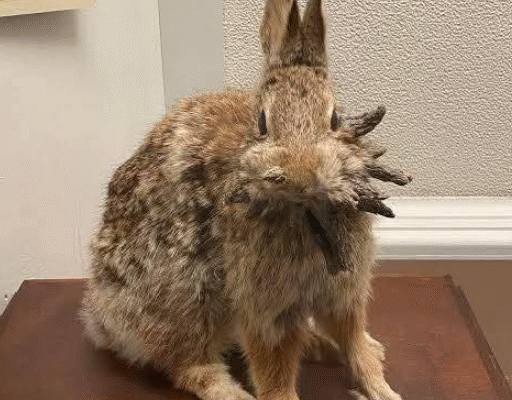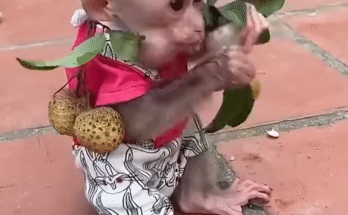A series of images of wild rabbits in the state of Colorado (USA) with black tumors like horns around their faces are spreading rapidly on social networks, causing netizens to call them “zombie” rabbits or “devil” rabbits. But what is the truth?
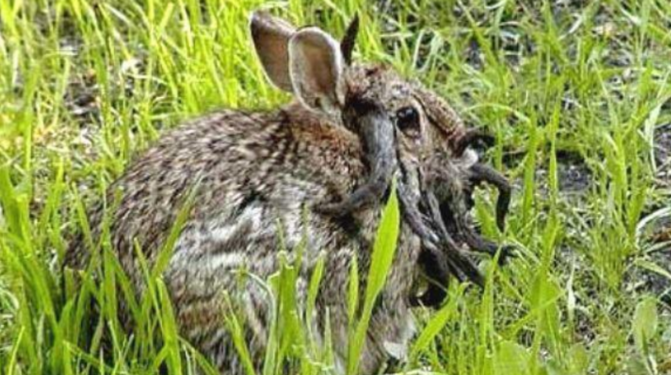
A rabbit with black horns growing all over its face is photographed by Colorado residents – Photo: Iowa Department of Natural Resources
Recently, residents in Fort Collins, near the city of Denver (Colorado, USA) have continuously shared on social networks strange images of wild rabbits growing black tumors that bend like horns around their mouths, eyes and heads.
This phenomenon quickly caused a “cyberstorm”, attracting a series of bewildered comments. Many users affirmed that “this is how the zombie virus started”, while another account said: “Now there are zombie rabbits”.
Local authorities have also received a series of calls from residents in Fort Collins to reflect on the strange phenomenon.
Many people even think that these images are the product of artificial intelligence. However, in reality, these images are completely real.
According to Sky News, experts claim that this is the result of a disease scientifically known as Shope Papilloma Virus – a special papilloma virus in rabbits.
This information was later confirmed by the Colorado Parks and Wildlife Service.
Kara Van Hoose, a spokeswoman for the Colorado Department of Wildlife, said the phenomenon is not too rare, especially in the summer.
The reason is that the virus is common in the Midwest of the United States and tends to flare up in the hot season, when fleas and ticks – vectors of disease – are active.
In addition, the virus can also spread directly from rabbits to rabbits, but not to humans or pets such as dogs and cats.
However, people are still advised not to touch or touch rabbits that show signs of infection.
In essence, tumors – called papillomas – usually do not pose a danger to the rabbit’s life. However, if they grow in sensitive areas such as around the eyes and mouth, or interfere with the eating process, it can lead to more serious consequences.
Normally, the rabbit’s immune system will fight the virus on its own, and the tumors will gradually disappear. In the natural environment, infected wild rabbits rarely need medical intervention.
However, with rabbits kept indoors, experts recommend taking them to a veterinarian for examination and treatment, as a closed environment can aggravate the disease.
According to Sky News, this disease has been recognized by scientists very early. In 1931, researcher Richard E. Shope first described the disease, and his name was also used to name the virus.
So far, studies of the Shope Papilloma virus have contributed significantly to the discovery of the link between the virus and cancer – similar to how the HPV virus is associated with cervical cancer in humans.

A rabbit infected with Shope Papilloma Virus – Photo: Clinton Forry
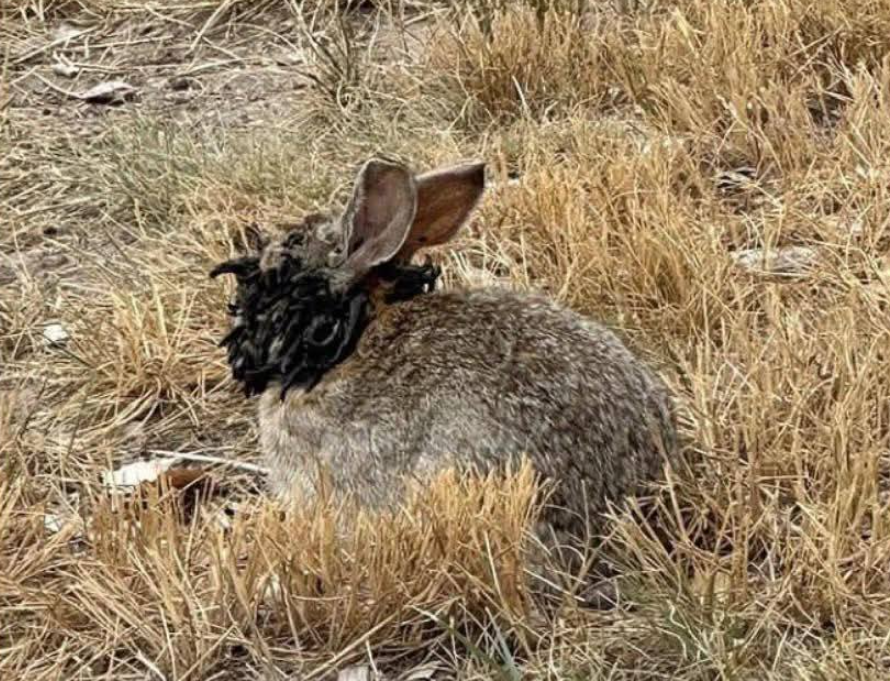
A rabbit infected with Shope Papilloma Virus – Photo: Facebook
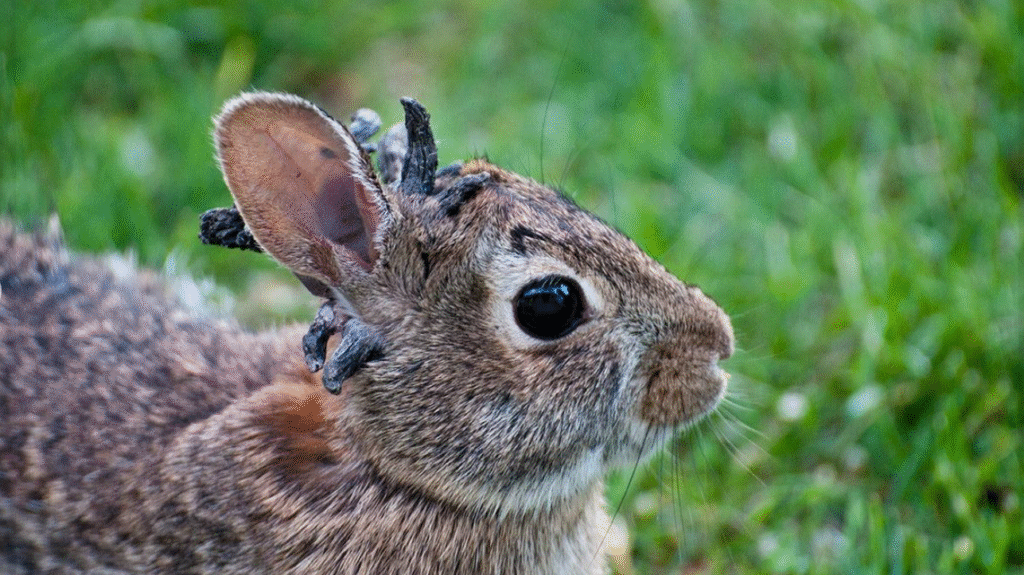
A rabbit infected with Shope Papilloma Virus – Photo: Facebook

A rabbit infected with Shope Papilloma Virus – Photo: Facebook
More than 100 viruses have been detected in fur farms in China, some of which are new and potentially contagious to humans.
